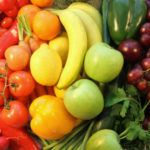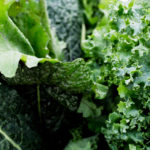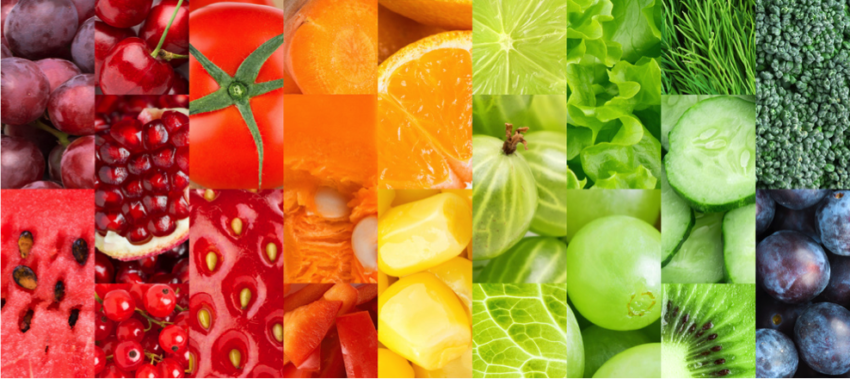When it comes to nutrition there are two important things to consider: what you eat and what your body can do with what you eat.
Most of my clients are eating a fairly healthy diet when they start working with me but somehow they are still dealing with health complaints such as low energy levels, fatigue, weight gain, gas, bloating, constipation, IBS-like symptoms, or brain fog.
What they often haven’t focused on is making sure that their digestive system is functioning optimally.
 You see, both parts go hand in hand. You want to eat a healthy, diverse and nutrient dense diet and make sure that the vital nutrients are being broken down and absorbed efficiently.
You see, both parts go hand in hand. You want to eat a healthy, diverse and nutrient dense diet and make sure that the vital nutrients are being broken down and absorbed efficiently.
Many people don’t make that connection between their gut health and their symptoms but even if there are no obvious digestive issues, there is a good chance that underlying imbalances in your digestive system are playing a role in your frustrating health issues.
Once you have put a digestive healing approach into place (and you can read more about that here), the next step is to boost the nutrient density of your diet so that you can flood your system with plenty of vital goodness and start to experience high levels of energy, good quality sleep, clarity, focus and optimal health, naturally.
Here are three of the top nutrient dense food categories that are easy to include in your diet:
-
Rainbow Colored Vegetables & Fruits
 Red tomatoes, orange pumpkin, purple eggplant, yellow bell pepper, white cauliflower, green broccoli, blueberries, and the list goes on. Aim for 9 to 13 servings of different plant foods on a daily basis. Every color has its own unique set of nutrients and unique health benefits and a combination of colors therefore provides a wide spectrum of goodness. The best and most nutrient dense meals look like a rainbow. This Mexican Salad is a great example of a colorful meal.
Red tomatoes, orange pumpkin, purple eggplant, yellow bell pepper, white cauliflower, green broccoli, blueberries, and the list goes on. Aim for 9 to 13 servings of different plant foods on a daily basis. Every color has its own unique set of nutrients and unique health benefits and a combination of colors therefore provides a wide spectrum of goodness. The best and most nutrient dense meals look like a rainbow. This Mexican Salad is a great example of a colorful meal.
-
Glorious Greens
 Green leafy vegetables are often missing in our modern diets and they are some of the most nutrient dense foods on the planet. They are high in calcium, magnesium, iron, potassium, phosphorous, zinc and vitamins A,C, E and K. They are full of fiber, folate, chlorophyll and other micronutrients and phytochemicals. Some of the benefits of greens are blood purification, cancer prevention, improved circulation, improved immune system, healthy intestinal flora, clearing congestion and more.
Green leafy vegetables are often missing in our modern diets and they are some of the most nutrient dense foods on the planet. They are high in calcium, magnesium, iron, potassium, phosphorous, zinc and vitamins A,C, E and K. They are full of fiber, folate, chlorophyll and other micronutrients and phytochemicals. Some of the benefits of greens are blood purification, cancer prevention, improved circulation, improved immune system, healthy intestinal flora, clearing congestion and more.
There are so many different greens to choose from: kale, watercress, swiss chard, romaine lettuce, spinach, arugula, bok choy, microgreens, to name a few. I recommend you experiment and pay special attention to local and seasonal greens. Here in the Philippines we have some amazing greens such as malungay, kamote tops, and chili leaves.
This smoothie recipe is a great way to include greens at the start of your day.
-
Organ meat
 Organ meats, also known as offal, include foods such as liver, kidney, heart, sweetbread or tripe. These foods are very high in nutrients such as B Vitamins, iron and zinc, which are difficult to obtain in sufficient amounts from other food sources.
Organ meats, also known as offal, include foods such as liver, kidney, heart, sweetbread or tripe. These foods are very high in nutrients such as B Vitamins, iron and zinc, which are difficult to obtain in sufficient amounts from other food sources.
While this may seem like a less glamorous way of boosting the nutrient density of your diet to many people nowadays, studies have confirmed that traditional cultures highly valued these parts of the animal and naturally followed a “nose to tail” way of eating with a special emphasis on these nutrient dense organ meats.
If it feels like a stretch to be eating organ meats, start with chicken liver as one of the milder options. Try to get liver from organic, pasture raised chicken and use an easy way to prepare it: by making liver pate. Daniele Walker from Against All Grains has a lovely recipe for liver mousse on her website here. Once you get used to the flavor, you can start to branch out and try other organ meats.
Have fun experimenting with new ways to boost your nutrient intake.
Be Well!
Monique


